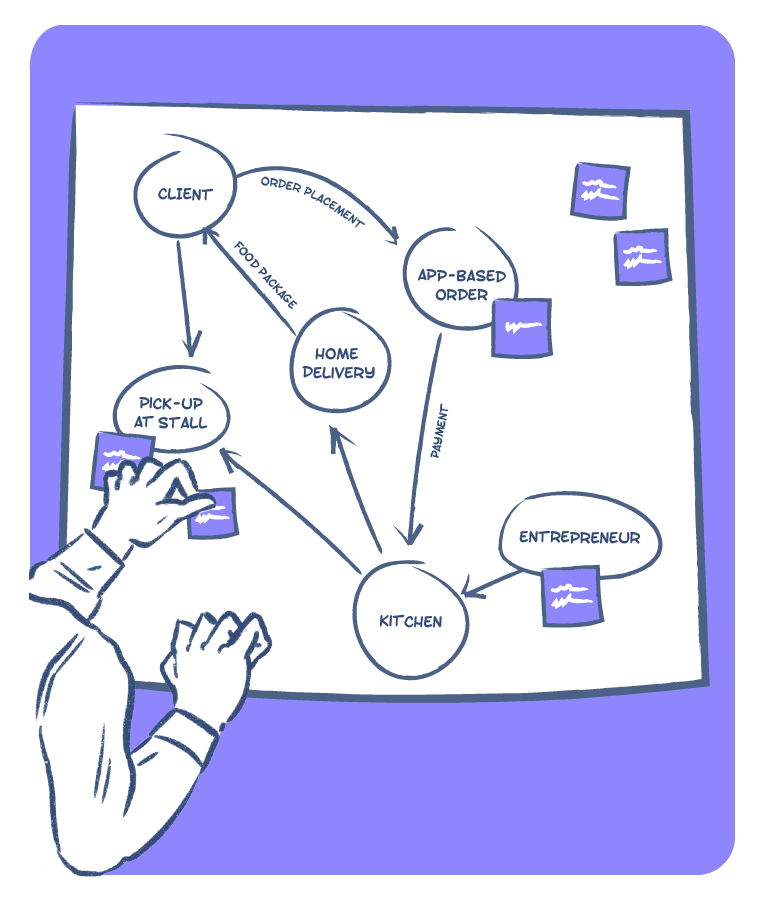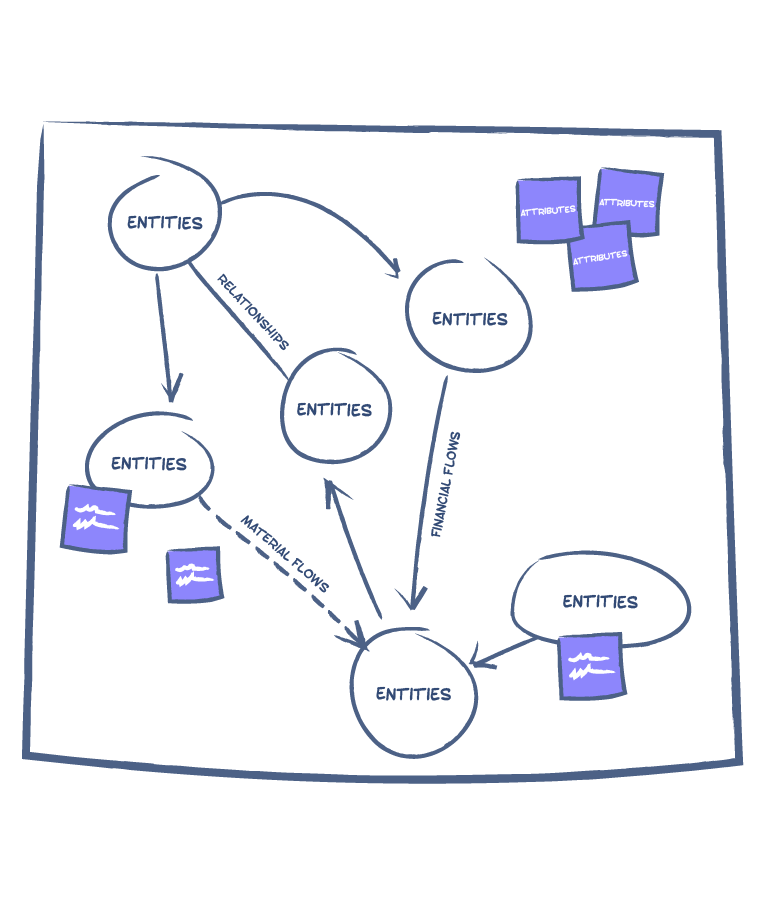HUMAN CENTERED DESIGN | DEFINE
ERAF Diagram
30 Min
ERAF Diagrams are often referred to as system maps. They are used to represent complex ecosystems that involve multiple Entities (people, organisations, systems) that are connected and therefore in Relationships with each other. Each Entity has a set of Attributes (features, roles, needs). Each Relationship may be described in terms of Flows (financial, material, informational, influence, skills, etc.) from one Entity to another.
USE CASES
- Visualise a current ecosystem and describe its true nature.
- Visualise a future ecosystem to imagine its potential nature.
LIMITATIONS
Mapping ERAF Diagrams can get confusing for a system with multiple entities connected to each other.

